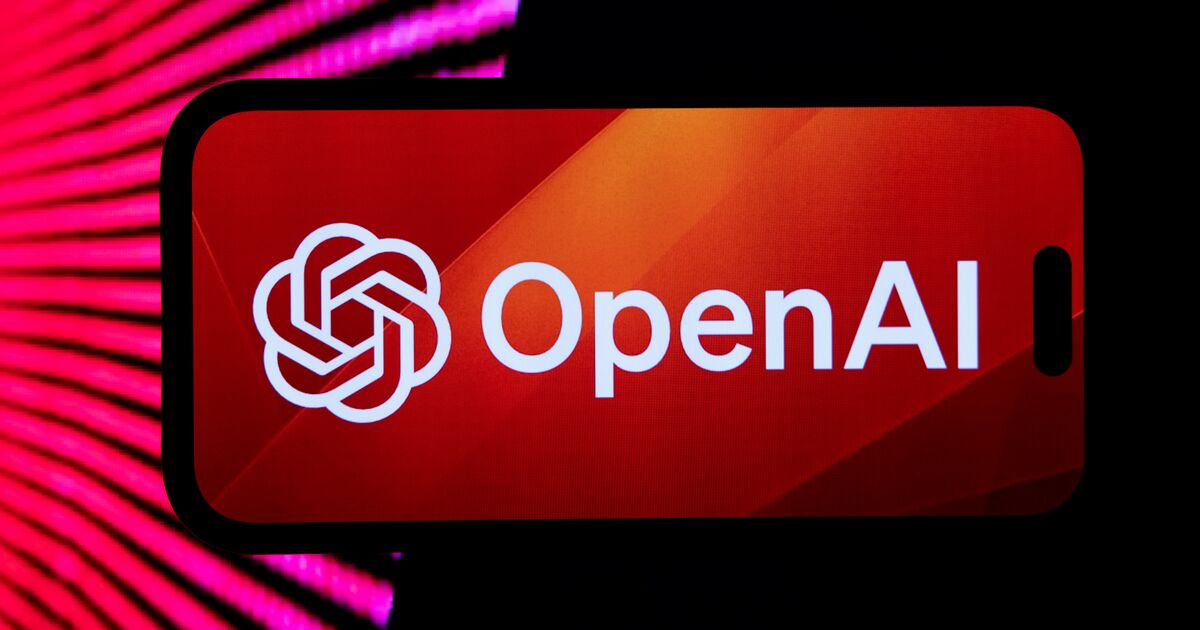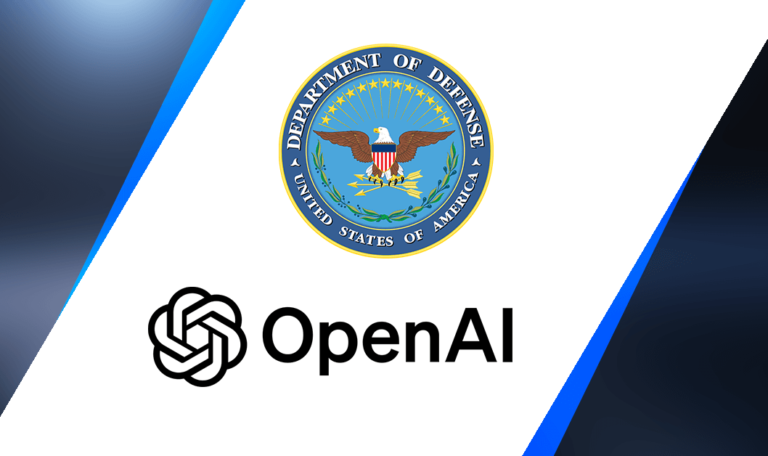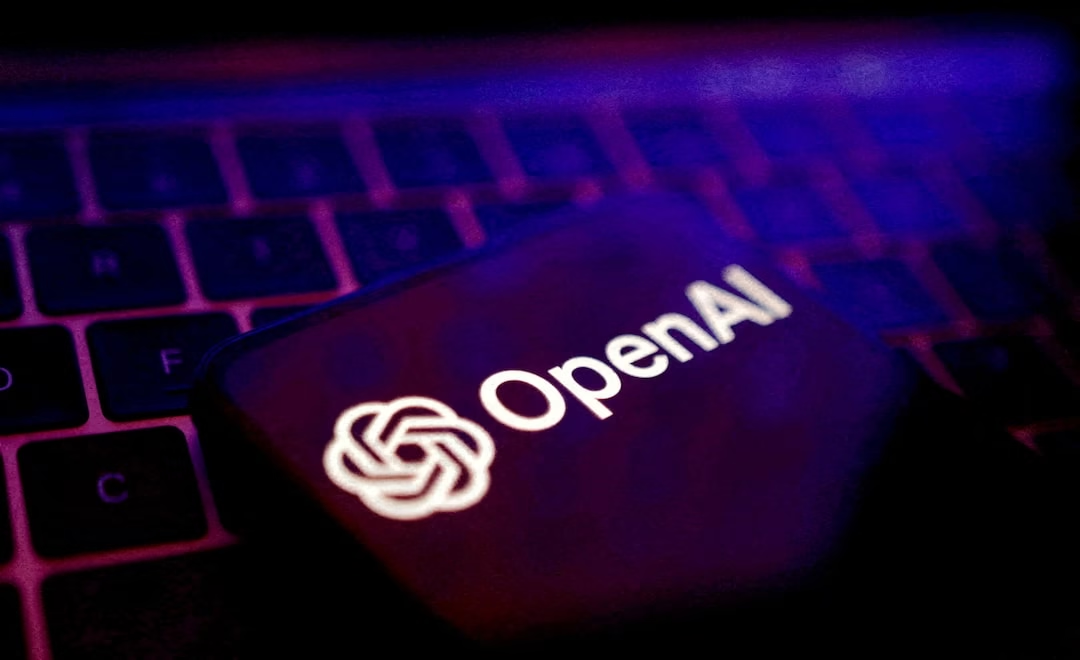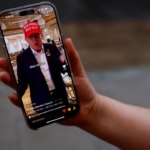Unpacking the OpenAI $200 Million US Defense Contract Details: Purpose, Scope, and How the Pentagon Will Use AI
Estimated reading time: 8 minutes
Key Takeaways
- OpenAI has secured a significant $200 million direct contract with the U.S. Department of Defense.
- This deal is focused on applying advanced, “frontier” AI capabilities to national security challenges.
- The **Pentagon AI contract awarded to OpenAI purpose** covers both “warfighting and enterprise domains” but with a strict emphasis on non-lethal applications.
- The Pentagon plans to use OpenAI’s tools for tasks like administrative automation, cybersecurity, and logistics support – not autonomous weapons.
- This is considered the **OpenAI first military contract value and scope** directly with the DoD, part of their new **OpenAI for Government initiative military deals**.
- The partnership reflects a growing trend of Silicon Valley engagement with defense, navigating complex ethical considerations.
Table of contents
- Unpacking the OpenAI $200 Million US Defense Contract Details: Purpose, Scope, and How the Pentagon Will Use AI
- Key Takeaways
- Introduction
- Understanding the Contract: Value, Scope, and Significance
- The Purpose Behind the Deal: Applying “Frontier” AI
- How the Pentagon Will Utilize OpenAI’s AI Tools
- Context: OpenAI’s Government Initiative and Past Work
- Industry and Public Reactions
- Conclusion
- Frequently Asked Questions
Introduction
The intersection of artificial intelligence and national defense is rapidly evolving, marked by a growing partnership between leading AI research labs and government entities. This trend signifies a critical shift in how advanced technology is viewed and adopted for national security. As AI capabilities expand, governments worldwide are exploring their potential to enhance defense strategies and operational efficiency. For the United States, this means leveraging cutting-edge developments from innovators in the field.
The latest and most significant example is OpenAI’s new $200 million contract with the Pentagon. This development brings into focus the specific rapid evolution of AI and national defense partnerships, noting the significance of leading AI labs working with the U.S. government. The recent **OpenAI $200 million US defense contract details** are not just a financial transaction; it’s a deal that signals both the growing reliance of national security agencies on cutting-edge AI and the shifting stance of tech companies toward military partnerships. Historically, some tech giants have been hesitant about direct military collaborations, but this contract suggests a potential turning point in that relationship.

The stated **Pentagon AI contract awarded to OpenAI purpose** is focused squarely on applying advanced AI to national security challenges. This includes addressing needs within “warfighting and enterprise domains,” but importantly, OpenAI has emphasized that their involvement will be strictly non-lethal. This distinction is crucial and aligns with their stated ethical policies regarding the use of their technology.
This post will delve into the specifics of this landmark agreement. We will examine the details of the contract, including its exact value, scope, and whether it truly represents the **OpenAI first military contract value and scope**. Furthermore, we will explore **How will Pentagon use OpenAI’s AI tools?** – outlining the types of applications and functions their AI systems are intended for. Finally, we will place this contract within the broader context of the **OpenAI for Government initiative military deals**, understanding what this means for future collaborations between Silicon Valley and the defense sector. Join us as we unpack this significant development at the intersection of AI and national security.
Understanding the Contract: Value, Scope, and Significance
The recent announcement of OpenAI’s contract with the U.S. Department of Defense has drawn considerable attention, primarily due to the size and the nature of the partnership. Let’s break down the core **OpenAI $200 million US defense contract details**.
The specific financial commitment underscores the seriousness of this collaboration; the exact value of the contract is $200 million. This substantial figure was awarded to OpenAI by the U.S. Department of Defense (DoD), highlighting the government’s investment in bringing advanced AI capabilities into its operations. The process by which this contract was secured is also noteworthy; it was a competitive acquisition that received 12 offers. This level of competition highlights the intense interest from both the government and industry players in advancing AI for defense, suggesting that the DoD is actively seeking the best possible AI partners available.

Within the vast structure of the Pentagon, OpenAI’s contract is primarily managed through the Pentagon’s Chief Digital and Artificial Intelligence Office (CDAO). This office is tasked with accelerating the adoption of data, analytics, and AI across the department, making it the logical hub for overseeing such a significant AI initiative. The structure of the engagement is also clearly defined: the deal is structured as a one-year pilot program. This pilot approach allows both OpenAI and the Pentagon to explore the potential applications and challenges of integrating frontier AI in a controlled, evaluated environment before potentially scaling up.

The primary work location for this pilot program is slated for the National Capital Region, putting OpenAI personnel in close proximity to Pentagon offices and decision-makers, facilitating collaboration. The projected completion date is July 2026, setting a clear timeline for evaluating the success and outcomes of the initial phase of this partnership.
A critical aspect of this deal is its status in relation to OpenAI’s history with government and defense work. This is widely considered OpenAI’s first official direct defense contract. While the company has previously engaged in projects that touch upon government or defense themes, such as cybersecurity tools or partnerships with defense-adjacent startups, this $200 million agreement with the DoD marks a significant milestone as a direct contractual relationship. It signifies a deeper, more formalized commitment from OpenAI to working with the U.S. military and federal agencies, moving beyond exploratory projects into substantial collaboration with considerable **OpenAI first military contract value and scope**. Although it’s the first direct military contract, OpenAI has previously participated in government-related projects and initiatives, laying some groundwork for this larger engagement.

The Purpose Behind the Deal: Applying “Frontier” AI
Understanding the core motivation behind the Pentagon awarding a significant contract to OpenAI reveals the evolving strategic thinking within national defense regarding artificial intelligence. The **Pentagon AI contract awarded to OpenAI purpose** is explicitly centered on leveraging the most advanced forms of AI available today.
The contract is focused on developing “frontier” AI capabilities. What does “frontier AI” mean in this context? It refers to advanced AI systems – typically large language models and related technologies – that are at the leading edge of what AI can currently achieve. These systems possess complex reasoning, data analysis, and pattern recognition abilities that go beyond previous generations of AI tools. The overall goal driving this collaboration is to address critical national security challenges that require sophisticated computational power and analytical depth. The stated purpose encompasses both “warfighting and enterprise domains”. This broad scope indicates that the Pentagon sees potential applications for AI across the full spectrum of its activities, from strategic planning and intelligence analysis to administrative operations and logistics. However, it is crucial to note the explicit limitations OpenAI has placed on its involvement.
While the scope is broad, the specific areas where OpenAI’s work will center have been clarified through public statements and research, focusing on applications that align with their ethical guidelines. These include:
- *Enhancing administrative functionality within the DoD:* The Pentagon is a massive organization with extensive administrative needs. AI can significantly improve efficiency in these areas. A concrete example is streamlining healthcare applications for service members, reducing bureaucratic hurdles and improving the speed and accuracy of processing vital health-related information.
- *Improving cybersecurity defenses:* In an era of constantly evolving digital threats, robust cybersecurity is paramount for national security. OpenAI’s AI can be used to enhance systems designed to counter evolving digital threats, identifying patterns of attack, predicting vulnerabilities, and potentially automating responses to sophisticated cyber intrusions. This aligns with the growing recognition of breakthrough AI in cyber defense.
- *Supporting non-lethal functions:* This is a key area where OpenAI’s policies come into play. The contract focuses on applying AI to functions that do not involve autonomous weapons or direct combat roles. Examples include logistics (optimizing supply chains, transportation, and resource allocation), predictive maintenance (using AI to predict equipment failures before they occur, ensuring readiness), planning (assisting with complex operational planning scenarios), and decision support (providing AI-powered analysis to inform human decision-makers).

OpenAI has explicitly emphasized that its participation aligns with internal usage policies. These policies are stringent: they prohibit the development or control of weapons systems and restrict technology use to non-lethal military applications. This stance reflects the ongoing ethical debate surrounding AI in warfare and OpenAI’s position on responsible AI deployment, connecting to broader discussions around AI fairness, ethics, bias, and accountability. The contract’s purpose is therefore a careful balance between leveraging cutting-edge AI for national security benefits while adhering to specific ethical boundaries regarding the use of that technology in military contexts.
How the Pentagon Will Utilize OpenAI’s AI Tools
Moving beyond the stated purpose, the practical question for many observers is: **How will Pentagon use OpenAI’s AI tools?** The contract aims to integrate OpenAI’s capabilities into the daily operations and strategic functions of the Department of Defense, focusing on areas where AI can enhance efficiency, analysis, and support systems.
The overarching goal is clear: The Pentagon aims to leverage OpenAI’s advanced language models and AI systems for a range of non-combat military and administrative functions. This means deploying AI tools not for directly engaging in warfare, but for improving the vast infrastructure and complex processes that underpin military operations.
Based on the details released and the focus of the contract, concrete examples of how the tools could help include:
- *Automating administrative paperwork:* The DoD generates and processes an immense volume of documentation. AI can be deployed to automate administrative paperwork, such as managing healthcare and personnel records, freeing up human personnel for more critical tasks and reducing errors.
- *Enhancing cyber defense capabilities:* Cybersecurity is a constant battleground. OpenAI’s AI can be used to analyze network traffic, identify potential threats, and predict attack vectors, helping to enhance cyber defense capabilities against sophisticated digital attacks. This proactive approach is essential in protecting sensitive military data and systems.
- *Providing rapid analysis and decision support:* Military logistics and resource management are incredibly complex. AI can process vast amounts of data quickly to identify optimal routes, predict supply needs, or analyze complex scenarios. This allows the Pentagon to provide rapid analysis and decision support for logistics and resource management, improving efficiency and responsiveness in critical operations.

It is important to address the apparent distinction between the DoD’s traditional language and OpenAI’s stated focus. While DoD documents may reference “warfighting” domains as part of their overall mission scope, OpenAI’s public communications and the specifics of this contract are centered on enterprise and support functions. This is a critical point, underscoring that the partnership is consistent with a policy of not enabling autonomous weapons or direct combat decision-making. OpenAI’s involvement is geared towards improving the operational backbone and defensive posture, rather than developing offensive capabilities.
Furthermore, OpenAI has publicly noted that only AI models and applications consistent with its stated ethical guidelines will be deployed. There are limitations and safeguards in place regarding classified or sensitive military uses, ensuring that while the technology is powerful, its application within the Pentagon is carefully controlled and aligned with responsible AI principles. This pilot program serves as a testbed for determining how best to integrate these advanced, non-lethal AI tools into the complex environment of national defense.
Context: OpenAI’s Government Initiative and Past Work
The $200 million contract with the Pentagon doesn’t exist in isolation; it is a key component of OpenAI’s broader strategic engagement with the U.S. government. The contract is part of OpenAI’s newly announced “OpenAI for Government” initiative. This program represents a formalized effort to work more closely with federal agencies, signaling a dedicated approach to public sector collaborations. This move can be seen in the context of major tech companies scaling AI investments, as detailed in insights like Meta’s scale AI investment and impact on the AI industry, where partnerships and specialized initiatives are becoming common.

The fundamental aim of this program is to unify OpenAI’s government collaborations and expand the availability of advanced AI models and tools to U.S. agencies. By establishing a dedicated initiative, OpenAI is streamlining how government partners can access and utilize their cutting-edge technology, ensuring that agencies like the DoD have a clear pathway to implement AI solutions for public service and national security missions.
The initiative’s declared goals are ambitious and focused on enhancing government operations. They aim to improve public service efficiency and empower government employees in critical missions. This includes a wide range of applications, ranging from administrative streamlining to supporting cyber defense. The Pentagon contract fits perfectly within this framework, addressing both the “enterprise” (administrative) and certain “warfighting support” (cyber defense, logistics) aspects of these government missions.
While this $200 million deal is considered the **OpenAI first military contract value and scope** in a direct sense, OpenAI has engaged in defense-adjacent or government-related projects previously. These earlier collaborations helped build expertise and relationships within the public sector. For instance, prior to this deal, OpenAI engaged in defense-adjacent projects, such as partnering with defense startup Anduril on counter-unmanned aircraft systems, a critical area involving explosive AI drone technology and defenses against it. They have also been working on cybersecurity tools for the Pentagon, an area explicitly included in the scope of the new contract. These earlier engagements provided valuable experience and demonstrated OpenAI’s capability to contribute to sensitive government and defense-related tasks, albeit on a smaller or less direct scale.
Furthermore, recent governance changes within OpenAI underscore the company’s increasing focus on national security and defense considerations. Adding former NSA chief Paul Nakasone to its board and hiring ex-Pentagon official Sasha Baker are significant personnel decisions. These appointments signal a deeper engagement with national-security policy and the defense sector, suggesting a deliberate strategy to navigate the complexities and opportunities within government collaborations. This strategic shift provides essential context for understanding the ambition and seriousness behind the **OpenAI for Government initiative military deals**, with the Pentagon contract serving as a prominent example of this evolving focus.
Industry and Public Reactions
The announcement of OpenAI’s $200 million contract with the Pentagon has not been met with silence; it has sparked considerable discussion within the tech industry, government circles, and the wider public. The deal is a landmark moment, reflecting the increasing convergence of Silicon Valley innovation and U.S. defense priorities. This partnership is seen by many as a significant indicator of how future national security strategies will incorporate advanced AI technologies.

One notable aspect is the observed shift in the tech industry’s stance towards defense work. For years, many prominent Silicon Valley companies were hesitant, or even resistant, to taking on military contracts, often facing internal dissent from employees concerned about the ethical implications of contributing to defense technology. However, industry experts note that tech companies are now viewing defense as both a lucrative industry and a critical national responsibility. This perspective marks a reversal of earlier reluctance to collaborate on military projects, driven by factors such as increasing global competition in AI development, the potential for large-scale government funding, and a perceived patriotic duty to contribute to national security. This shifting landscape is one of the critical AI challenges for the tech industry to navigate in terms of ethics and public perception.
Despite this shift, ethical considerations about AI’s role in warfare persist and remain a subject of intense debate. Critics voice concerns about the potential for dual-use technologies, where tools developed for non-lethal purposes could eventually be adapted for autonomous weapons or enhanced surveillance capabilities. This is a core part of the broader discussion around AI fairness, ethics, bias, and accountability.
OpenAI’s policy change in 2024, which adjusted its acceptable use policies to allow certain military collaborations (while specifically continuing to ban the development or use of lethal applications), was itself controversial within tech circles. However, this change was instrumental in positioning the company to take on government work, including this significant contract with the Pentagon. It reflected a conscious decision by OpenAI leadership to engage with the defense sector under carefully defined constraints.
In response to ongoing scrutiny and ethical discussions, OpenAI reiterates that its technology, as used by the Pentagon, will remain consistent with its acceptable use policies. This emphasis is designed to address concerns by focusing specifically on non-lethal, support-oriented roles, such as improving logistics, administrative tasks, and cybersecurity, rather than applications in direct combat or autonomous weaponry. The public and industry will be watching closely to see how this partnership develops and if the practical application of OpenAI’s technology within the DoD aligns with these stated ethical boundaries and limitations.
Conclusion
OpenAI’s $200 million Pentagon contract represents a pivotal step in national defense’s adoption of advanced AI.
The deal’s **OpenAI $200 million US defense contract details** regarding value ($200 million), the managing entity (Pentagon’s CDAO), and its structure as a one-year pilot program highlight the significance and specific focus of this collaboration.
The **Pentagon AI contract awarded to OpenAI purpose** is to deliver “frontier” AI solutions for both warfighting support and enterprise/administrative domains, crucially emphasizing a non-lethal focus consistent with OpenAI’s policies.
Regarding **How will Pentagon use OpenAI’s AI tools?**, the contract is designed to improve public service efficiency, enhance cybersecurity, and support non-lethal military functions like logistics and planning.
This is considered the **OpenAI first military contract value and scope** directly with the DoD, driven by the recently announced “OpenAI for Government” initiative military deals.
The partnership illustrates both the opportunities and debates surrounding AI’s role in government, subject to OpenAI’s internal usage safeguards, offering a glimpse into the future of public-private technological alliances in national defense.
Frequently Asked Questions
- What is the value of the OpenAI contract with the Pentagon?
The contract is valued at $200 million over a one-year pilot program period.
- Is this OpenAI’s first military contract?
Yes, this is considered OpenAI’s first official direct contract with the U.S. Department of Defense, although they have engaged in previous government-related or defense-adjacent projects.
- What is the main purpose of the contract?
The purpose is to apply advanced “frontier” AI capabilities to national security challenges, focusing on both enterprise (administrative) and warfighting support domains, with a strict emphasis on non-lethal uses.
- How will the Pentagon use OpenAI’s AI tools?
The Pentagon intends to use the tools for non-combat functions such as automating administrative tasks, enhancing cybersecurity defenses, and providing decision support for logistics and resource management.
- Does this contract mean OpenAI is developing weapons systems?
No, OpenAI has explicitly stated that its participation aligns with internal policies prohibiting the development or control of weapons systems and restricting technology use to non-lethal military applications.






